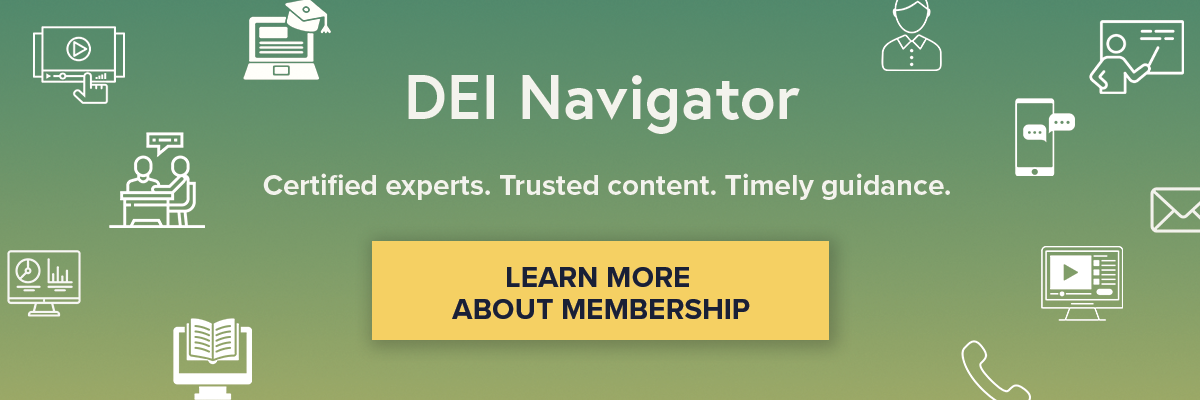In recent years, calls to end unpaid internships have become increasingly common. Professional organizations and students have become more vocal about the inequities perpetuated by this business practice, particularly in correlation with exponential increases in student loan debt, growing technology, and wealth gaps.
Further, pre-pandemic, there was already a sense that internships were essentially replacing entry-level jobs. And the exasperation of seeing entry-level positions that require 1 to 2 years of experience is well-documented. This has only been exacerbated by the ongoing pandemic, which left many students without internship options.
The problem is that internships and the need for practical experience isn’t going anywhere.
Research suggests that having a history of internships increases a student’s chances of getting a job. But as students compete for internships — even paying for placement services — and entry-level jobs, it’s becoming easier to see how students from different socioeconomic backgrounds are facing an uphill battle.
What I learned working with dozens of students seeking internships and career advice
For the past seven years, I have taught public relations courses at Towson University. While teaching core courses such as public relations writing, corporate communication management, and the capstone-level public relations campaigns, I was lucky enough to find myself preparing students for industry. Each semester, I served as a faculty internship supervisor, academic advisor, and mentor to dozens of students seeking career advice.
Sadly, working so closely with students also gave me direct insight into the inequities created by the internship process.
For context, it’s important to note that Towson is a Predominantly White Institution (PWI) but is notable for its relatively diverse student population. In 2019-2020, approximately 32% of students identified as non-White.
However, student diversity went well beyond the measured and reported student data. Many of the students in my courses had transferred to Towson from community colleges and other universities. I also had an increasing number of first-generation, immigrant, and non-traditional students, many of which were living with or supporting families in the Baltimore area.
In line with commentary about the inequities wrought by unpaid internships, I found that the more I taught upper-level courses, the more I saw the challenges students faced when they didn’t have one on their resume.
Many students simply didn’t have the luxury to complete internships
I lost count of how many students worked full-time or had multiple part-time jobs to make ends meet in a major metropolitan area. They were supporting themselves and often supporting their families, and they simply didn’t have the financial safety nets required to work for free.
While I marveled at these students and how they juggled their schedules in order to work while completing their degrees, I couldn’t help reflecting on my time as a graduate student at Penn State University (PSU).
Located in the middle of Pennsylvania, the area surrounding PSU’s main campus afforded students few options for industry internships during the school year. Instead, students focused on classes before scattering across the country during the summer to complete competitive internships with leading organizations.
Although this was partially a function of the university’s location, it was also indicative of the socioeconomic privileges many students benefited from. These were the same privileges that allowed them to attend a top-tier university with deep and prestigious industry connections.
This is not to say that Towson did not afford its students impressive industry opportunities. Rather, it highlights how disparities start when people are in school. The more my students needed to work to survive, the less chances they had to seek unpaid or competitive industry internships.
The fewer opportunities they had, the harder time they had finding jobs. My frustration grew with each graduating class as I watched some of my best and brightest students passed over for jobs they were well-prepared to tackle. No matter how hard they pushed to balance work and school schedules, they were judged for their lack of “professional experience” – for their lack of internships.
It didn’t take long for me to question how I could structure my classes to give students experience they could bring to entry-level positions
I implemented service-learning as a logical first step, and I developed semester-long projects that could be turned into professional portfolios. I also leaned heavily on guest speakers and professional development experiences with the hopes of creating networking opportunities for students.
But for a faculty member doing this work independently, this was hard. It meant significantly adding to my already overstuffed workload. I was constantly juggling planning and communication with course clients, guest speakers, and department and university offices to make sure I had the resources to provide these experiences.
Still, I never regretted my approach to teaching because these efforts eventually started paying off. Although I wish even more students would have had these outcomes, I slowly started hearing stories about coursework and networking connections leading to internships and entry-level positions.
Ultimately, with the support of my professional community, I started seeing how we could begin to chip away at barriers created by the unpaid internship model. I also realized how important it was to have the support of my local professional community.
What you can do to help create solutions
If a company is truly committed to strengthening its DEI approaches — especially when it comes to hiring and retaining quality employees — the most logical first step is to pay its interns. As internships become increasingly technical, and interns are expected to complete meaningful work for companies, their pay should reflect the skills required to do the job.
However, creating more equitable circumstances for students entering the internship and job markets can go far beyond this first step. There are multiple ways in which companies can volunteer their time and skills to educators and in the classroom that can meaningfully help chip away at the disparities many students face as they begin their careers.
- Be a guest speaker. At this point, it’s impossible for me to convey the value of the guest speakers who have given time to my classes. Not only because of the insights they provide but also because of the networking opportunities they create for students who may not have the time or resources to make these connections independently.
- Reach out to see how you can help. Especially if you’ve had a good group of interns from a specific university, college, or department, reach out to department leaders or faculty who are teaching relevant courses to see how you might be able to support students. Also consider contacting faculty advisors for student groups to see what resources or educational opportunities they might be interested in pursuing.
- Invite students to your events. If you can, do this for free. If you can’t, consider how you can offer a discounted group rate. My local professional chapter did this for an online conference during the pandemic and it allowed us to engage with both regional and far-flung students.
- Review faculty materials and assignments. Staying connected to industry best practices, standards, and advancements takes a considerable amount of time for faculty who are no longer practicing their profession. A simple way to support faculty is to quickly review their materials to provide insight regarding the skills being taught. This action can help faculty stay current while also helping students be better prepared for the jobs they’ll eventually apply for.
- Offer software demonstrations. New software and applications are constantly being adopted in industry. It’s not always easy for faculty in higher education to reflect these tools in the classroom, particularly when they are cost prohibitive. Software demonstrations can at least expose students (and faculty) to the latest tools, giving them a better understanding of the types of skills they might want to develop.
- Recognize in-class work as related and relevant experience. A student may not have completed an internship, but if they have a portfolio or can meaningfully discuss work completed in the classroom, give them a chance. I purposefully structured my public relations campaigns course so students would have experience working through and strategically developing a proposed campaign for a real client. A handful of my students have landed positions because they were able to show and discuss their projects, highlighting their foundational knowledge.
All told, I count myself as incredibly fortunate to have been able to build a network of professionals who were downright enthusiastic about giving back in the classroom. I’ve had guest speakers, feedback on assignments, and insights from industry professionals that helped me shape both what I taught in class and the guidance I provided students as they navigated their transition from college to industry.
Ultimately, the most valuable thing an organization can do to prepare students more equitably for participation in the workforce is to offer paid internships.
But in lieu of – or in addition to – doing that, there are still numerous ways for an organization to change the conversation about internships and entry level jobs. Giving back to the community by building relationships with faculty and students can both showcase and shape your organizational culture, while also creating opportunities to be more mindful about how your organization contributes to and improves the entry-level market.
Melanie Formentin, Ph.D., APR is an independent researcher who spent seven years teaching public relations courses at Towson University. Her research emphasizes relationship management theory, corporate social responsibility (CSR) and care ethics. Specifically, she privileges understanding audience perspectives to build relationships and measure organizational successes. Her interest in bridging theory and practice means she’s remained an active member of her professional community. In addition to being regularly involved in her local PRSA chapters, she emphasized creating transferable, practical experiences for students in the classroom. While returning to industry, Formentin has continued researching the application and evaluation of care-based values and practices in public relations.







